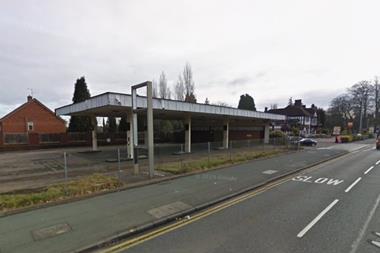Loyalty cards have been very much in the news recently. I don’t know whether you saw the recent documentary about Tesco’s clubcard, but if you did I’m sure you would have been impressed by its scale and potential economic and marketing power. So the question is, are loyalty cards worthwhile in the forecourt market in 2007?
Of course, loyalty cards or schemes, are not a modern retailing phenomenon. Probably the first such scheme was introduced by the Co-operative Society back in the late 1800s and was based on giving ’members’ a distribution of profits via a dividend payment calculated by the amount spent in a year. Jumping forward to the 1960s and our industry, and we had all the token schemes - tiger tails, glasses, football medals etc. Come the 1970s, we saw the explosion of trading stamps - green, pink, Co-op, double issue, 10-fold, 20-fold. By the 1980s we had scratchcards and the first of the card-based schemes, Mobil’s Premier Points and Total’s Tops card.
If the purpose of loyalty cards is to influence a customer to buy from you rather than a competitor, the second interesting issue is how this ’persuasion’ is achieved. What reward do you offer to tempt your punters? I think it would be fair to say that our industry has probably tried more approaches than any other. I’ve already mentioned the glasses and football medals but they are just the tip of the iceberg. Cutlery, cooking utensils, gardening tools, place mats, CDs and cassettes, replica models, even collectable Smurfs for the kids, - you name it and we’ve tried it. Leaving aside the token-based schemes, we then moved to the more long-term promotion. Money-back vouchers to spend at your site, linking with store groups and leisure chains to give vouchers to spend with them and even the more exotic such as discounts off holidays or driving a Ferrari round a race track.
In the past our principle purchaser was the male motorist. The most sought-after specimen for all the loyalty schemes was the high-mileage company motorist - a large purchaser not spending his own money. The theory was that he wouldn’t care about price provided he got something for ’free’.
but our customer profile has changed. With the increase in car ownership our customers are of both sexes and from all walks of life. At the same time, the internet, the growth of large-scale multiple retailers and the consequences of globalisation for manufacturing have all combined to decimate the ranks of the high-mileage company man.
The increased diversity of our customer base has also had an effect on how they can be influenced. Mrs Jones not only buys fuel from us but also shops at the local hyper, visits the department store and does ’lunches’ or ’gym workouts’. Her visits to us are only one of many spending experiences and the amount she spends with us, although still a comparatively high amount, isn’t so significantly more than her expenditure on her other shopping experiences.
Coupled with all this has been the squeeze on our margins. Loyalty schemes aren’t free and the more worthwhile the incentive is to the customer, the more expensive the scheme is for the retailer. In the past this didn’t matter so much - we might have protested at 0.3p a litre but at least we were making 4p to begin with. With margins often below 2p it’s a different story.
That’s why I have to admire BP and Nectar points. The oil company has tied to a scheme where its customer can collect from a wide array of retailing, not just buying fuel. And the persuasiveness of the offer, together with a very strong presence in the fuel card market, has enabled BP to price above the market and yet still be the market leader!
Loyalty cards that only reward from buying fuel can’t afford to provide a big enough incentive. They’re dead - even if certain oil co’s don’t recognise it yet!!



























No comments yet